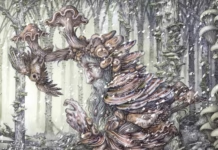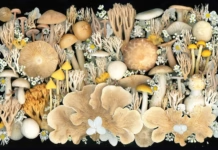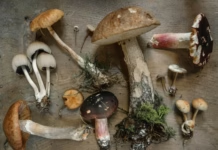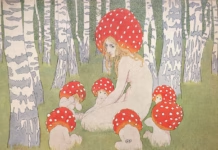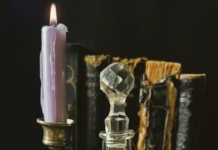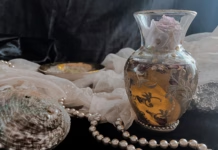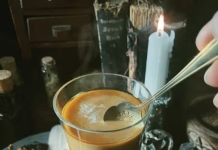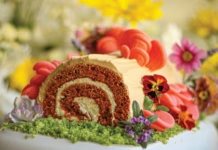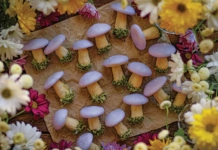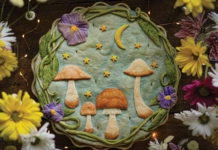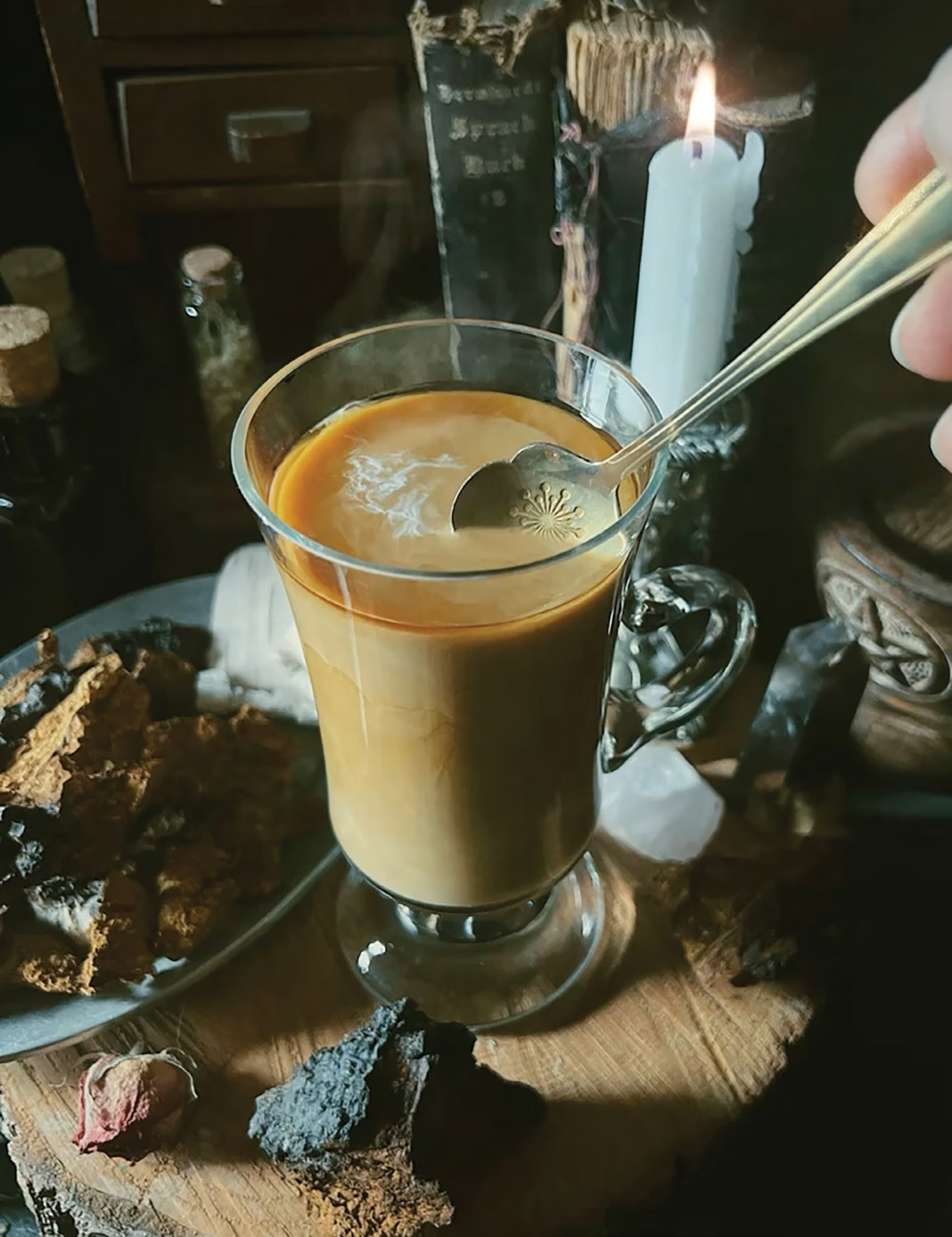When spring finally arrives after a long winter’s nap, you’ll find me foraging in the forests and fields that surround my home, harvesting medicinal wildflowers, plants, and mushrooms. As with any kind of activity, it’s nice to pause and fully take in the beauty that’s waking up all around us.
One of my favorite ways to carve out slow-paced, quiet time for myself and luxuriate with the plants and fungi is through a ritual of making and drinking a relaxing yet energizing natural brew made of infused chaga mushroom. Chaga grows in abundance in the dense Maine woods that surround my home.
About Chaga
Chaga, commonly known as Black Gold, the Diamond of the Forest, and the Mushroom of Immortality, is considered a powerful medicinal and magical fungus. Humans have been working with it for thousands of years, and it has an especially deep-rooted history in Siberian folk medicine. The word chaga comes from the Russian word czaga, which means mushroom.
I’ll let you in on a little secret: Chaga is not actually a mushroom (a fleshy, fruiting body) but hard mycelial armor known as sclerotia. This bulbous, parasitic body matures slowly into a corky conk (a mushroom growing from a tree trunk) with a rough, blocky texture, typically on white and yellow birch trees in the coldest regions of North America, Siberia, and Scandinavia. Maine is a chaga hotspot.
Chaga is considered an adaptogenic superfood and is revered for its high concentration of beta-glucan, a micronutrient believed to have immune-supporting properties. Sadly, chaga has become subject to commercial exploitation and overharvesting. That is why it’s imperative to harvest it in a responsible and sustainable way, from a living, standing birch tree. Look for chaga specimens that are at least the size of a large grapefruit, preferably larger, and that have a vibrant orange-brown interior. It’s best practice to leave some of it behind for regeneration, though regrowth is highly variable; it may regenerate fully in two years or not at all. It takes eight or more years for chaga to mature enough for harvesting.
Once chaga is harvested and broken into smaller chunks, it’s best dried in a dehydrator on a low temperature (around 100°F) for 24 hours. Give it a rest for one day, then dry it again for another 24 hours. If you’d rather purchase your chaga, Birch Boys is a great place to do so, as it is transparent about its use of sustainable practices. And if you’re interested in foraging for chaga yourself, I recommend doing more research: birchboys. com is a wonderful place to start.

Medicinal and Magical Attributes Disclaimer: Before starting any course
of healing, including natural remedies and supplements, consult with a health-care professional who can help find what’s best and safest for you. If you’re taking medications, pregnant, or nursing, definitely do not start using chaga until you speak to a qualified medical caregiver. Chaga may interact with certain medications or cause allergic reactions in some people.
Chaga is not a psychedelic fungus, as it does not contain psilocybin. But research shows that it is rich in antioxidants and anti-inflammatories, boosts the immune system, improves energy, and can be used for soothing arthritis and managing high blood pressure. It contains antiviral properties, supports healthy blood sugar levels, lowers cholesterol, supports a healthy liver, is beneficial for digestive health, and is used in cancer therapy.
Magically speaking, chaga is associated with intuition and wisdom, and it may be used in rituals to enhance psychic abilities and deepen meditation. It’s also associated with transformation (specifically with changing and letting go), inner peace, healing, vitality, and resilience.
Uses
Chaga is typically brewed as a tea, made into a tincture, or formulated as a powder or capsule. I like to brew my foraged chaga nuggets into a rich, brown, flavorful tea and combine it with warmed cream and maple syrup to make a decaffeinated chaga milk tea. It has a unique and delicious taste—earthy, full-flavored, creamy, and naturally sweet, with notes of vanilla, caramel, dark berries, and cocoa. You can drink it black, but
I prefer adding warmed cream and local maple sugar, which complement chaga’s flavor nicely.
You can also burn chaga as a sweet-smelling incense. I reserve this for special occasions, as chaga is a somewhat rare, precious medicinal, and it can be a little pricey.
Chaga Milk Tea Recipe
- Four 1-to-1½-inch chunks of chaga, or pieces that add up to the equivalent
- 1 quart water
- Cream or milk of your choice
- Maple syrup or other sweetener
- Makes 1 serving
Place water and your nuggets of chaga in a small pot on a stove.
Bring to a boil; boil for 20 minutes.
Turn the heat down to low and simmer for 30 minutes.
You’ll notice the brew darkening as it simmers.
Turn off the stove and remove the chunks of chaga with a large spoon or tongs. The good news is you can get several uses from these chunks, so allow them to dry and use them again for your subsequent brews.
Pour yourself a mug of the tea.
Add cream or your desired type of milk. I like to heat the cream prior to adding it to my brew.
Sweeten to taste with maple syrup. Other sweetener options include honey or sugar, but maple syrup, in my opinion, complements the flavor best.
Most of the water will evaporate in the boiling and simmering process, so you’ll be left with a large single portion or perhaps a small extra amount, depending on the size of your mug.
Important safety note: Chaga contains commonly occurring plant crystals called oxalates (as does spinach, for context), which can be harmful to the kidneys if ingested in large amounts. You can safely drink one to two cups of chaga tea a day, a few times a week.








